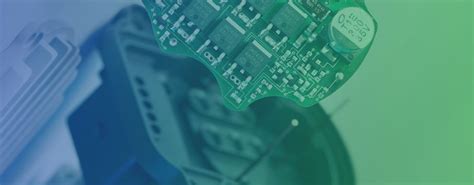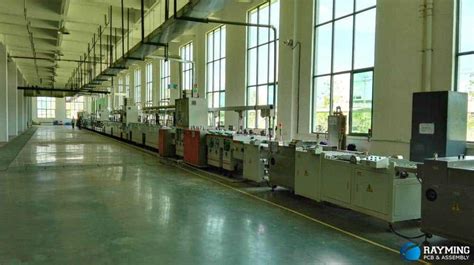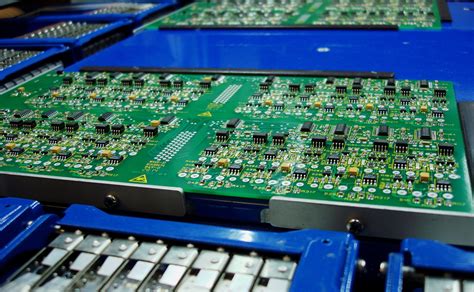Six methods of making your own PCB
Method 1 of making your own PCB:
- Cut the copper-clad board into the required size of the circuit diagram.
- Put the wax paper on the steel plate, use a pen to carve the circuit diagram on the wax paper at a ratio of 1:1, and cut the circuit diagram carved on the wax paper according to the size of the circuit board, and put the cut wax paper on the printed copper-clad board.
Take a small amount of paint and talcum powder to make a suitable printing material with a suitable consistency, dip the printing material with a brush, and evenly apply it to the wax paper. Repeat several times, and the printed board can be printed with a circuit. This type of engraving can be used repeatedly and is suitable for small batch production. - Prepare a corrosive solution with a ratio of 1 gram of potassium chlorate and 40 ml of 15% hydrochloric acid, and apply it to the place on the circuit board that needs to be corroded for corrosion.
- Wash the corroded printed board repeatedly with water. Wipe off the paint with banana water, and wash it several times to make the printed board clean without leaving any corrosive liquid. Apply a layer of rosin solution and wait for it to dry before drilling.
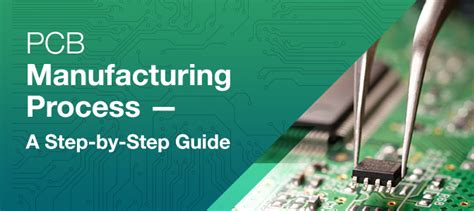
Method 2 for making your own PCB:
There are many ways to make printed circuit boards in amateur conditions, but they are either time-consuming, complicated in “process”, or of poor quality. My method of making printed circuit boards is one of the best comprehensive methods, as follows:
- Make a printed circuit board diagram. Use dots to represent the pads in the diagram, and use single lines for connecting, but the position and size must be accurate.
- Cut the printed circuit board according to the size of the printed circuit board diagram, and clean the copper foil surface.
- Use carbon paper to copy the diagram to the printed circuit board. If the circuit is simple and the maker has some experience in making boards, this step can be omitted.
- According to the specific situation of the actual component, paste the standard pre-cut symbols (pads) of different inner and outer diameters; then paste the tape lines of different widths depending on the current. Standard pre-cut symbols and tapes are available in electronic stores. Common specifications of pre-cut symbols include D373 (0D-2.79, ID-0.79), D266 (0D-2.00, ID-0.80), D237 (OD-3.50, ID-1.50), etc. It is best to buy paper-based materials (black), and try not to use plastic-based (red) materials. Common specifications of tapes include 0.3, 0.9, 1.8, 2.3, 3.7, etc. The unit is millimeter.
- Use a softer hammer, such as smooth rubber, plastic, etc. to knock the sticker to make it fully adhere to the copper foil. Focus on the turning points and overlaps of the lines. When it is cold, it is best to use a heater to heat the surface to enhance the adhesion effect.
- Put it in ferric chloride for corrosion, but be careful that the liquid temperature is not higher than 40 degrees. After corrosion, it should be taken out and rinsed in time, especially when there are thin lines.
- Drill holes, polish the copper foil with fine sandpaper, apply rosin alcohol solution, and dry it. The quality of this printed circuit board is very close to that of regular printed circuit boards. 0.3 mm tape can pass between the two pins of the IC, which can greatly reduce the short jumper on the front of the board to save trouble and time. I often use this method to make experimental printed boards or a small amount of products at work.
Method 3 for making your own circuit board PCB:
Dissolve one part of paint flakes (i.e. shellac, available at chemical raw material stores) in three parts of anhydrous alcohol and stir appropriately. After it is completely dissolved, add a few drops of medical violet solution (gentian violet) to make it present a certain color. After stirring evenly, it can be used as a protective paint to depict the circuit board.
First, polish the copper plate with fine sandpaper, and then use the duckbill pen in the drawing instrument (or the ink duckbill pen used to draw figures on the compass) to draw.
The duckbill pen has a nut to adjust the thickness of the stroke. The stroke thickness is adjustable, and you can use a ruler or a triangle ruler to draw very thin straight lines. The drawn lines are smooth and uniform, without edge jagged, giving people a smooth and fluent feeling; at the same time, you can also write Chinese characters, English, pinyin or symbols on the vacant space of the circuit board
If the drawn lines are soaked around, the concentration is too low, you can add a little paint flakes;
if you can’t drag the pen, it is too thick, and you need to drop a few drops of anhydrous alcohol. It doesn’t matter if you draw it wrong, just use a small stick (matchstick) to make a small cotton swab, dip it in a little anhydrous alcohol, you can easily wipe it off, and then draw it again. Once the circuit board diagram is drawn, it can be corroded in ferric chloride solution. After the circuit board is corroded, it is also very convenient to remove the paint. You can wipe off the protective paint with a cotton ball dipped in anhydrous alcohol. After drying it slightly, you can apply rosin water for use.
Because alcohol evaporates quickly, the prepared protective paint should be placed in a small bottle (such as an ink bottle) and sealed for storage. Don’t forget to cover the bottle cap after use. If you find that the concentration has become thicker when you use it next time, just add an appropriate amount of anhydrous alcohol.
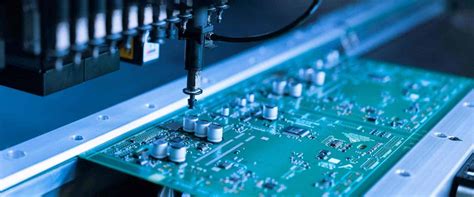
Homemade circuit board PCB method 4:
Stick the sticky note on the copper foil of the copper-clad board, then draw the circuit on the veneer, and then use a knife to carve through the veneer layer to form the required circuit, remove the non-circuit part, and finally use ferric chloride corrosion or current electrolysis to make a more ideal circuit board.
The corrosion temperature can be carried out at around 55°C, and the corrosion speed is fast. Rinse the corroded circuit board with clean water, remove the sticky note on the circuit, punch holes, wipe it clean and apply rosin alcohol solution for use.
Method 5 for making your own PCB:
- Arrange the density and position of components reasonably according to the shape of components used in the circuit schematic and the size of the printed board area. The position of components should be determined according to the principle of large first, small second, overall first, local second, so that adjacent components in the circuit are placed nearby and arranged neatly and evenly.
- The connecting wires between components cannot be turned at right angles at the bends and intersections of two lines. They must be transitioned with curves, and they cannot cross each other or detour too far. If some wires cannot do this, you can consider printing wires on the back of the printed board, and then connect them to the front circuit with nails, or use insulated wires to connect when soldering components.
- It is better to keep the input and output parts farther apart to avoid mutual interference.
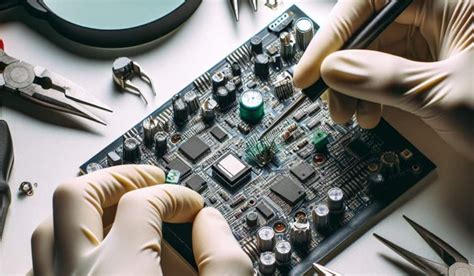
Method 6 for making your own PCB:
Radio enthusiasts have been troubled by making circuit boards. Now I will introduce a “sub-printing” method to make printed circuit boards. The method is as follows:
- Print the circuit board diagram on 80g copy paper at a ratio of 1:1 on the printer. Hand-drawing is also possible, but the base paper must be flat.
- Find a fax machine, take out the fax paper in the machine, and replace it with hot-melt plastic film (available in our company). Put the circuit diagram into the fax machine entrance, and use the copy key of the fax machine to copy the circuit diagram on the hot-melt plastic film. At this time, the “printed manuscript” of the printed circuit board is ready.
- Use double-sided tape to stick the plastic film with the prepared drawing flat on the copper-clad board. Note that it should be flat and not wrinkled, and the tape should not cover the melted part, otherwise it will affect the production effect of the circuit board.
- Use a paint brush to brush the paint evenly on the plastic film. Note: Do not brush back and forth, but only brush in one direction in sequence, otherwise the plastic film will wrinkle together and the lines on the copper plate will overlap. After the circuit diagram is completely brushed, carefully remove the plastic film. At this time, a printed circuit board is printed. After it dries, it can be corroded.
If you want to print multiple pieces, you can make a wooden frame that is slightly larger than the circuit board, and apply the silk screen (our company has silk screen for sale) flatly on the wooden frame and fix it. Then use double-sided tape to stick the fixed plastic film under the screen. Put the copper plate on the table, close the screen frame (the printed image and the copper plate should be aligned left and right), use a paint brush to paint in one direction, and remove the screen frame. The printed circuit board is printed. If there are defects, you can use paint and bamboo strips to modify them.
Pay attention to the above process. When painting, the hand force should be appropriate. If it is too heavy, the paint film will be too thick, and the lines will run lace. If it is too light, the lines will be broken. The plastic film must be facing up.

